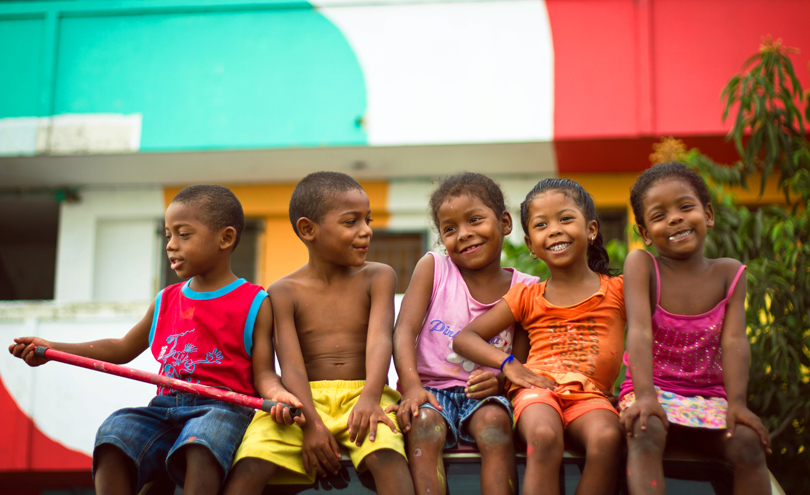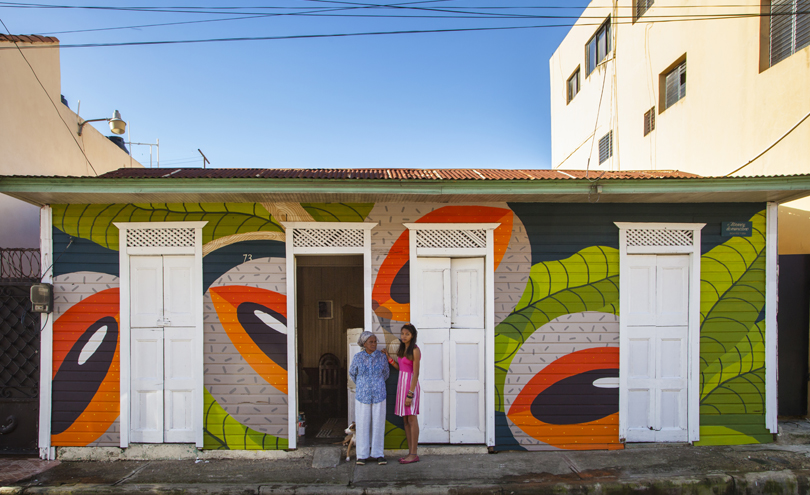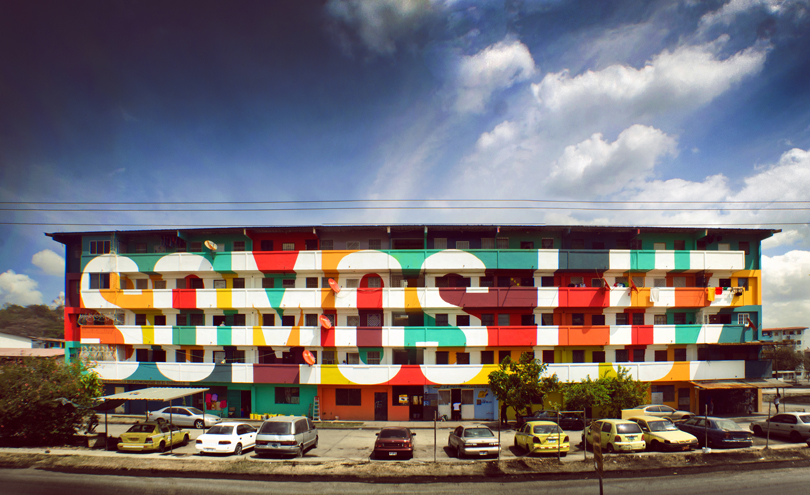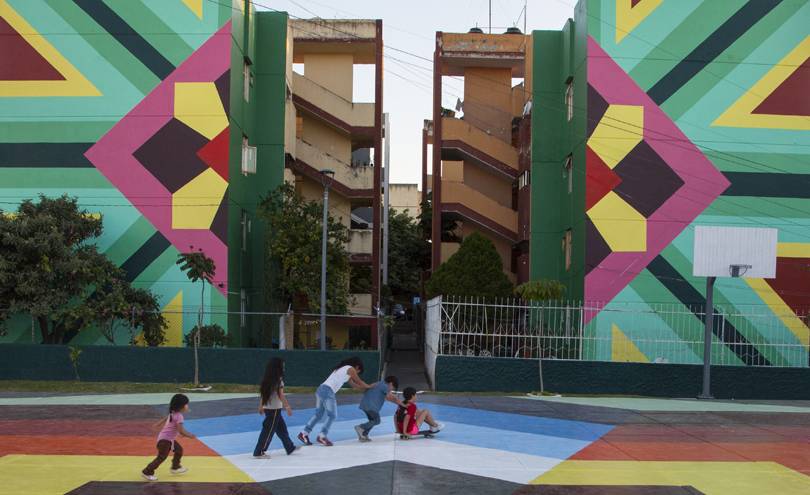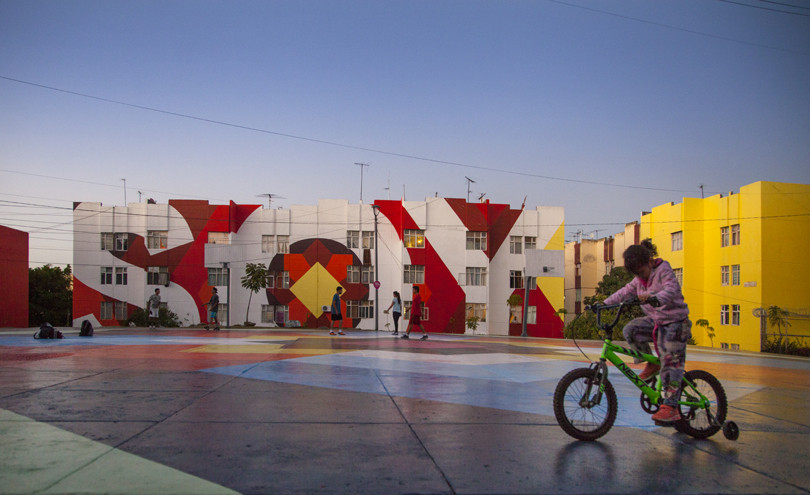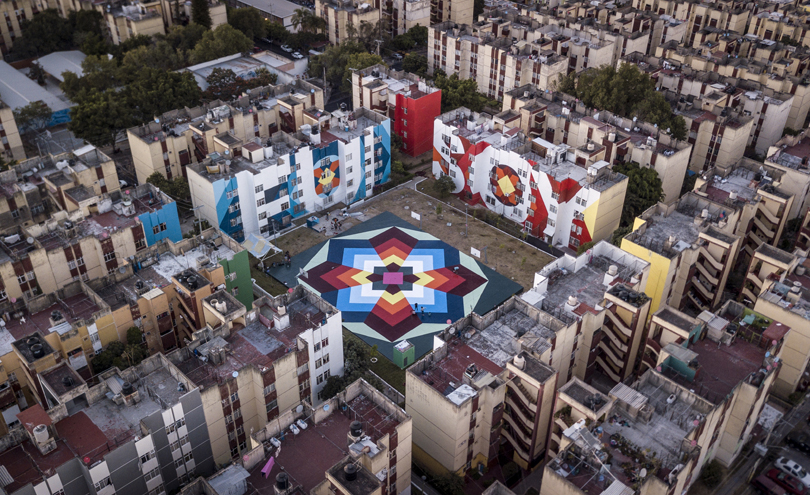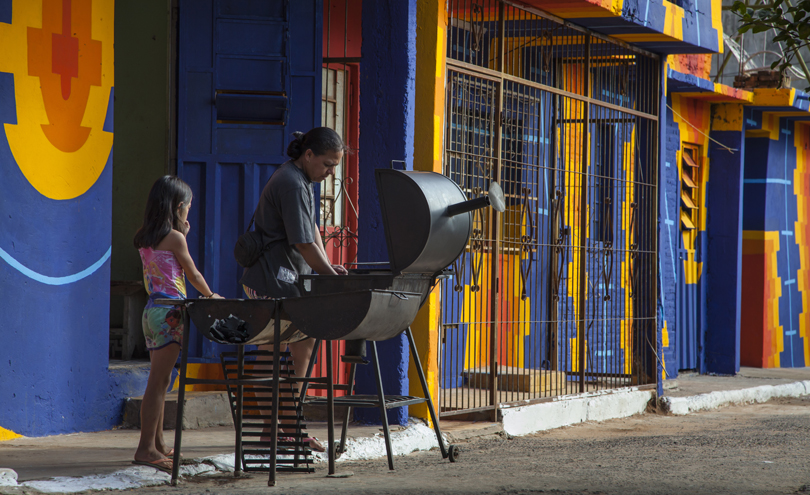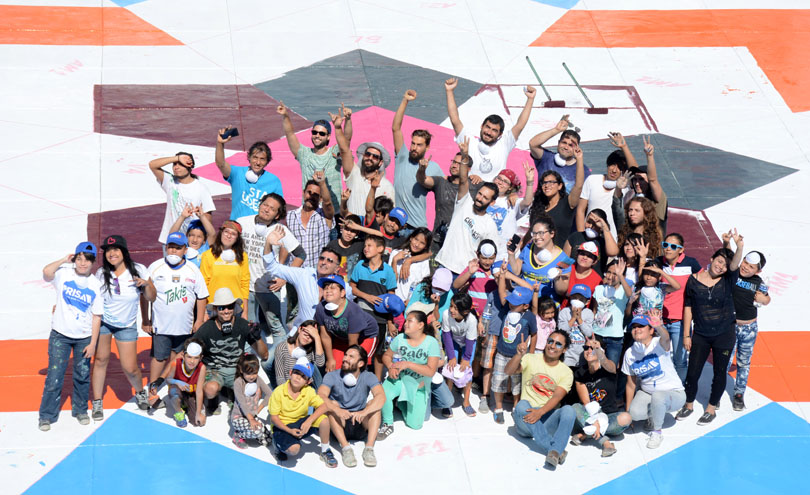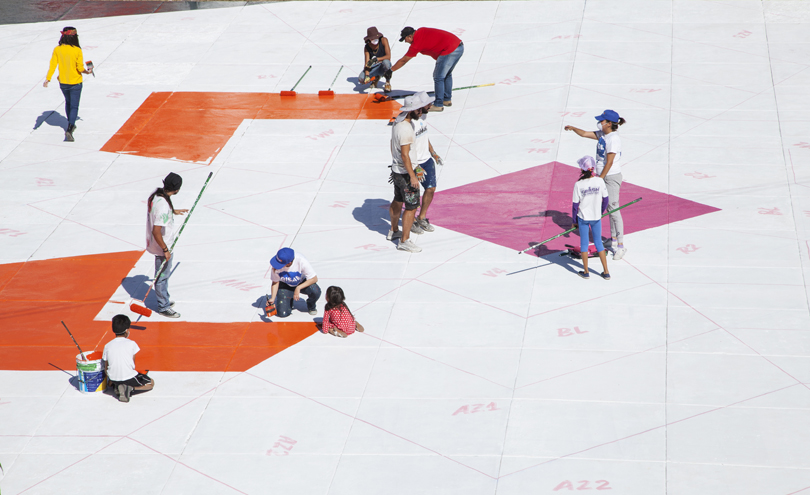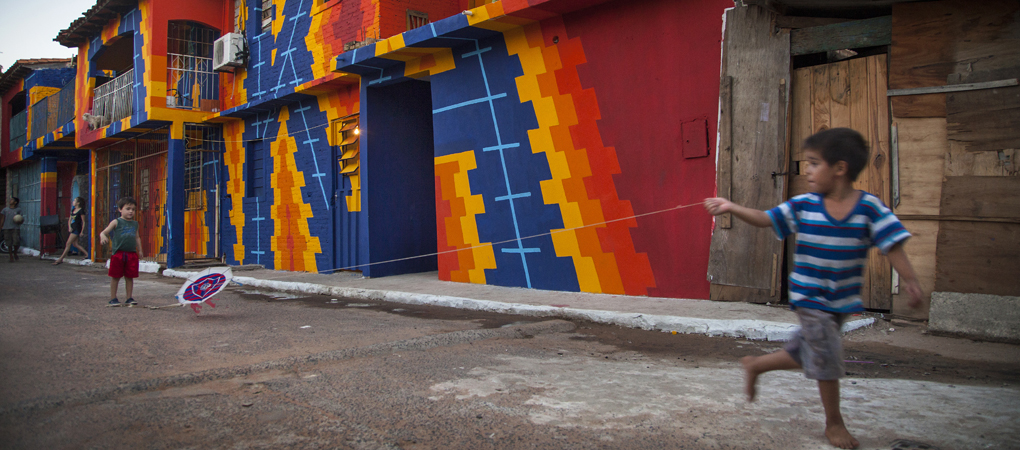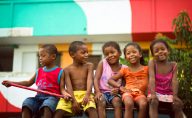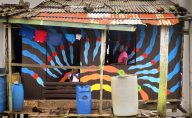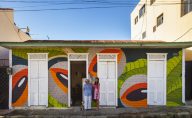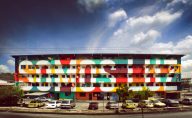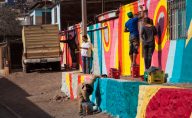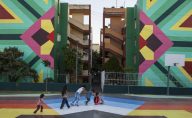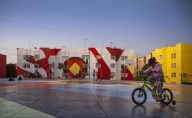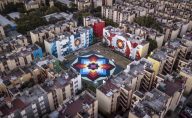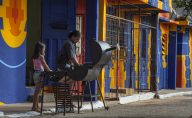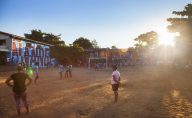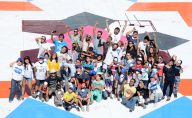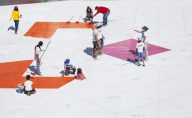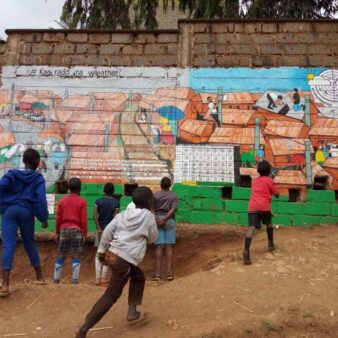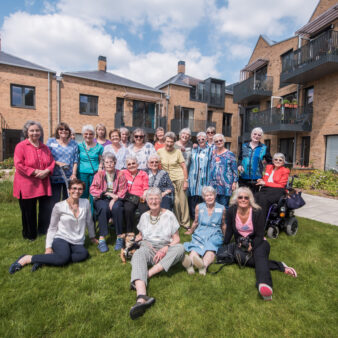Velokhaya is a special place for the residents of Khayelitsha. The cycling school is a refuge for hundreds of disadvantaged children, where they can ride bikes, learn, play, and escape from the harsh realities of life in the township on the outskirts of Cape Town, South Africa. Velokhaya is easy to spot among the vast sea of corrugated iron roofs, thanks to the colourful murals splashed across its walls. Looking from the outside, there is no doubt that this is a place for fun, adventure and, most of all, community. It’s the coolest place in the township and something its 400,000 inhabitants are proud of.
The bold exterior of the cycling school is no accident, but rather the result of a collaborative project led by Boa Mistura, a collective of artists, architects, designers and engineers with roots in graffiti art. The eight-person team first met as youngsters when they began painting the walls of their own neighbourhood in Madrid, Spain. Since 2001 they had been commissioned to transform a number of urban spaces with their murals, but the project in Khayelitsha was the first time the group had invited the community to help them paint. It was a turning point for the collective, who realised art was not just a way to improve the physical urban environment but that it could also be a catalyst for social change for the people living in the neighbourhood. And with that, the Crossroads project was born.
Since Velokhaya in 2011, Boa Mistura has completed 19 more Crossroads projects in 13 countries around the world, many of them in Central and South America. Each project aims to unify and inspire a marginalised or disadvantaged community through the process of creating a piece of street art that not only visually transforms the area but also changes residents’ perceptions of their neighbourhood and their own capabilities.
Getting to work
Boa Mistura is usually commissioned to carry out the work and funding tends to come from a number of sources, such as city councils and universities (Boa Mistura has also funded some projects itself). Crucially for the collective, funders are not able to influence the design. Costs range between USD$29,000 – USD$87,000 depending on the location and scale of the project. This includes site visits, materials, design and execution.
All projects follow the same four-step process, which begins with Boa Mistura’s team immersing themselves into the community. Their aim is to build a rapport with residents and identify people who can help carry out the project, including neighbourhood and cultural associations, non-government organisations and community leaders. To get a better understanding of the community, the team studies the history of the area, gathering information on local culture and any social problems residents might be dealing with.
Based on this research and their discussions with residents, Boa Mistura then draws up the preliminary designs for the project. This usually takes the form of a large mural, for example on the side of a building, along an entire street or covering the floor of a square. Identity and context are always central to the concepts, which are reviewed by the community who eventually vote to choose the final design.
Next comes the collaborative paint. All residents are invited to take part in the painting of the mural, though no one is obliged to participate. Children, young people and the unemployed are often particularly involved. Water-based paint is used and this and any other materials are bought locally.
Social impact
A key aim of the Crossroads project is to give residents a sense of ownership and belonging to their neighbourhood, which they – and others outside the community – may view in a negative light. Projects are carried out in disadvantaged neighbourhoods that are often tainted by stigmas relating to poverty and drugs. Most projects begin with a community clean-up and residents are engaged in all aspects of the process. By the final brush stroke, Boa Mistura hopes to have residents looking at their neighbourhood in a positive way and feeling good about their own place within it.
For some residents, taking part in a Crossroads project can also have a positive impact on their finances. More than 100,000 people live in communities that have benefitted from Crossroads projects and in many cases participants learn skills that can be useful for future employment. In some cases, the projects have specifically focused on training unemployed people in the community. For example, in Antofagasta, Chile, hundreds of houses were painted in four different neighbourhoods, giving work to more than 50 unemployed residents.
Volunteers from organisations outside the neighbourhood are also engaged to take part in the projects, creating important new ties with the community. Relationships among residents are strengthened through the process of working together, helping them to reclaim underutilised or misused public spaces. During the Crossroads project in Guadalajara, Mexico, which involved 250 residents, a square that had fallen into the hands of local drug dealers was painted together with the walls of the apartment blocks that surround it. The square is now a safe space for the community to hold social gatherings, concerts, markets and street parties.
At the end of each Crossroads project it is up to residents to maintain their renewed sense of belonging and empowerment and in a number of cases the community has gone on to expand on the original concept. For example, in Guadalajara, residents were initially fearful of an ex-gang member and local graffiti artist and did not want him involved in painting their apartment buildings. Today, he collaborates with the local authority, painting more murals in the neighbourhood in the same style and colours as the Crossroads piece. In Antofagasta, five young Crossroads participants have since joined an initiative called Color Habitante and are now carrying out similar projects in other neighbourhoods.
The future
The beauty of the Crossroads project is not just the way it transforms the appearance of a place with vibrant colours and designs that reflect the lives of the people who live there, but also in the simplicity of the concept, which is easily replicable in diverse locations around the world.
In the future, Boa Mistura aims to include a wider range of age groups, training levels, interests and abilities in the projects and believes the support of a sociologist within the team could help achieve this.
Wider ambitions for the collective include the transformation of a whole neighbourhood or even a city – and they may not have to wait too long. Thanks to its success in Antofagasta, Crossroads is being considered as a pilot for the design of a nationwide participatory painting initiative in Chile, demonstrating that art really can be the spark that ignites social change.
View the full project summary here – available in English only
